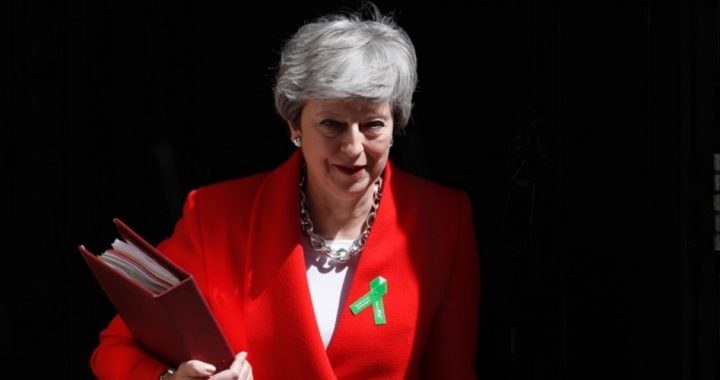
Whether or not her Brexit deal passes, British Prime Minister Theresa May has confirmed that she will announce a date for her resignation. The decision comes after months of repeated failure to deliver the U.K.’s divorce from the European Union, which was demanded by British citizens in 2016.
In a joint statement released by the 1922 Committee of Tory backbenchers and May, the two sides said they would meet during the week of June 3 in order to “agree on a timetable for the election of a new leader.”
The 1922 Committee, made up of rank-and-file Tory MPs, has been pressuring May to step down for months now. In recent weeks, after the third defeat of May’s Brexit plan and the failure of May’s government to leave the EU on March 29 as originally scheduled, that pressure has increased, even to the point of the committee considering amending the rule that a no-confidence vote against a member can only be taken a calendar year after any previous such vote. May survived a Tory no-confidence vote in December.
May met with the 1922 Committee on Wednesday. “We had a very frank exchange with the prime minister,” said Sir Graham Brady, the leader of the powerful committee. The prime minister was informed by the committee that unless she resigned, she would face another no-confidence vote, which she would almost surely lose this time around.
One prominent Tory Brexiteer, Mark Francois of the European Research Group of Tory Eurosceptic MPs (ERG) stated that May’s plan has little to no chance of passing in the House of Commons. “Within the ERG, opposition to Withdrawal Agreement Bill is increasing, so given that Labour have made plain they will oppose it, it seems incredibly unlikely that it will receive a second reading early in June…. In which case, the Prime Minister will be out of options, and the executive of the 1922 Committee will almost certainly have to facilitate a leadership contest among the parliamentary party.”
Even so, one provision of May’s resignation was that she be given one more chance to push her withdrawal deal through the House of Commons.
From the statement: “The Prime Minister is determined to secure our departure from the European Union and is devoting her efforts to secure the second reading of the Withdrawal Agreement Bill in the week commencing 3 June 2019 and the passage of that Bill and the consequent departure of the United Kingdom from the European Union by the summer…. We have agreed that she and I [Brady] will meet following the second reading of the Bill to agree to a timetable for the election of a new leader of the Conservative and Unionist Party.”
Challengers for the prime minister job are already lining up to replace May.
Boris Johnson, a former May cabinet member who resigned last July after May’s Chequers Plan to leave the EU was made public, has already let his intentions be known. Speaking at a private event in Manchester, Johnson told the audience, “of course I’m going for it,” after the news of May’s imminent departure became public. Johnson is a hardline Brexiteer who would prefer a deal with the EU, but probably wouldn’t hesitate to leave the EU on October 31 without one.
Among other Tories said to be vying for the position are former Brexit Secretary Dominic Raab, another hardliner on Brexit; Amber Rudd, the secretary of state for work and pensions, who is a close ally of May’s and was a Remain supporter in the lead up to the Brexit vote of 2016; and Matt Hancock, the current health secretary, who has largely stayed out of the Brexit debate.
There are unconfirmed reports that May was teary-eyed during her meeting with the 1922 Committee and, if true, who could blame her? It is widely known that May would like to have remained as prime minister, at least until the next general election in 2022. She obviously put her heart and soul into delivering her version of Brexit, even though she was on the Remain side when the original Brexit vote was being discussed.
May’s downfall is a cautionary tale not only in politics, but in life. In negotiating her Brexit deal, she tried to make everyone happy instead of picking a side and staying with it. But you can’t make everyone happy, especially in politics. Theresa May attempted to walk down the middle of the road and got squashed by both sides.
Photo: AP Images




